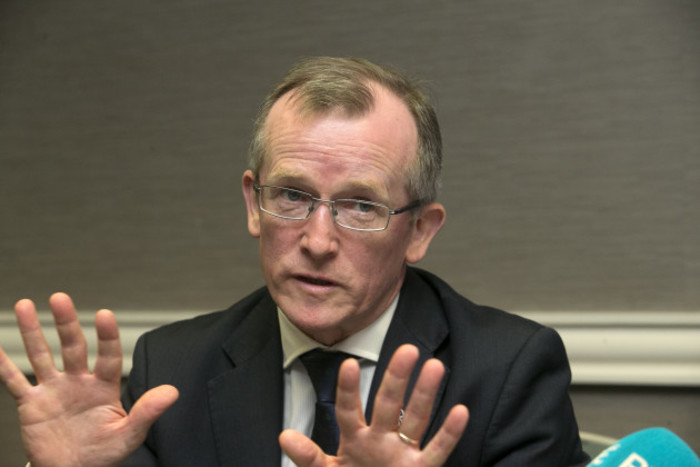Tourism bigwigs are worried about a dip in visitors during one of the busiest months
Value for money is ‘more important than ever’, Tourism Ireland said.
TOURISM IRELAND HAS said it is concerned about the fall-off in visitor numbers to Ireland in one of the busiest months of the summer.
The latest tourism statistics released by the Central Statistics Office show that while there has been a 3.8% boost in overall overseas visitors from January to July, there was a decline in tourists visiting Ireland in July.
Though July is typically one of the busiest months for visitors, the latest figures show there was a 1.1% decline in tourist numbers that month.
“It is definitely something we are concerned about … it is a worry,” said a Tourism Ireland spokesperson.
One of Ireland’s biggest tourism markets has also been impacted, with trips by those resident in Britain decreasing by 3.8% to 978,700 from May to July compared to the same period a year earlier.
In total, visitor numbers from Britain decreased by 6.2% annually between January and July.
Tourism Ireland boss Niall Gibbons blamed the fall-off in the numbers on the “very real” challenge of currency fluctuation.
“The decline in the value of sterling has made holidays and short breaks here more expensive for British visitors and economic uncertainty is undoubtedly making British travellers more cautious about their discretionary spending,” he said.
“This is impacting on travel to Ireland. Therefore, competitiveness and the value for money message are more important than ever in Britain right now.”
 Tourism Ireland CEO Niall Gibbons
Tourism Ireland CEO Niall Gibbons
Other markets
While there has been a dive in British visitor numbers, visitor numbers from other European countries increased by 5.4% annually to just over 1 million tourists from May to July.
There has also been a significant boost in trips by those travelling from North America, which increased by 12.3% to 713,600 for the same period.
However, Gibbons said Irish tourism officials cannot be complacent with July growth for that market only up 4% on a year ago.
“While North America and our long-haul markets continue to perform well, the double-digit growth we’ve seen in the earlier months of 2017 has now slowed,” he said. “Arrivals from North America are up 17.4% for January to July.”
Arrivals from mainland Europe grew by 4.3% annually from January to July, but there was a 2% decrease in visitors from that market for July alone.
Trips to Ireland from other areas such as Asia and Australia increased by 17.1% to 199,900 during the summer months.
Tourism Minister Shane Ross said he was pleased to see the ongoing strong performance in overseas visitors but is concerned about the fall-off in British visitors.
“The performance of the British market remains a concern, but I am confident that the efforts of both Tourism Ireland and Fáilte Ireland will help to minimise losses from this important market whilst at the same time encouraging and facilitating visitors from other sources,” he said.
 Tourism Minister Shane Ross
Tourism Minister Shane Ross
Fáilte Ireland CEO Paul Kelly said that while he welcomes the growth in US visitors “we need to be conscious that, historically, US visitor numbers have been more volatile and can go down more quickly, therefore we need to keep driving growth in the UK and Europe as well as other markets”.
In order to prevent a further reduction in numbers, he said it is imperative that those in the industry keep a tight focus on competitiveness.
“The industry must also step up to the plate and ensure that an Irish visit remains good value. If we were to lose our reputation as a good value destination, it may take us years to recover it,” he said.
Brexit
Eoghan O’Mara Walsh of the Irish Tourism Industry Confederation said the latest travel figures are further confirmation that Brexit has already become a real problem for Irish tourism.
Meanwhile, the Irish Hotels Federation said the industry faces significant risks associated with Brexit due to the continued economic uncertainty and the marked fall in the exchange rate, with regional tourism likely to be hit hardest.
The lack of hotel rooms, particularly in the capital, is an issue, said Tourism Ireland.
“There are fewer hotels in Dublin … demand is outstripping supply,” the state agency’s spokesperson said, adding that this won’t be resolved until at least 2019.”
Tourism Ireland said it does have a plan of action to win back visitor numbers. It will soon be pushing marketing campaigns which are price-led and show Ireland as being a value-for-money destination.
Written by Christina Finn and posted on TheJournal.ie






